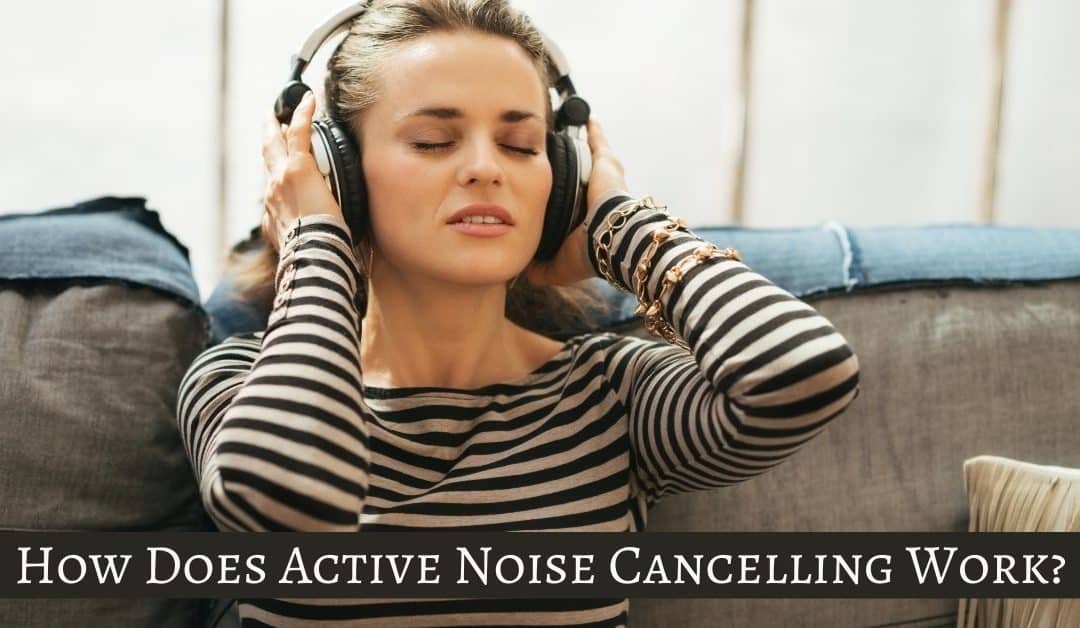Noise cancellation technology has become an integral feature in various electronic markets including headphone and hearing aid industries. There is a wide-range of products available that include some degree of noise-cancellation technology. There are different ways that this technology is implemented, creating varied quality and use experiences. If you are a commuter, sensitive to noise, or regularly listen to music; it is helpful to know about noise cancellation technology and what could work best for you!
Noise Cancellation Technology
Noise cancellation technology, the reduction (or cancellation) of background noise, can be traced back to the 1930s. In 1933, a doctor in Germany used phase-advancing waves to interfere with sounds from a loudspeaker at different points in space. This groundbreaking method led to more broadened noise cancellation technology and information. Active noise cancellation (ANC), the most common type, uses a system of physics which essentially involves the following:
- recording background noise through the tiny microphone on headphones for example
- inverting the soundwaves: means delaying one of the waves by one half wavelength so that they match which reduces, rather than amplifies the sound
- this anti-noise is then added to the output of your headphones
This system ideally cancels background noise before being absorbed by your ears. ANC prevents people from increasing the volume on their device in environments that are loud. ANC is an imperfect technology that varies based on the ability of the particular device to perfectly record background noise that is then analyzed and broken down into soundwaves. Microphones have different capacities to do this and this results in varied quality.
Types of Noise Cancellation
There are different ways that noise can be cancelled. Three main types of noise cancellation technology are:
- active: is the most well-known type and works as previously described. There are different methods of ANC:
- microphone on the outside of headphones, microphone on the inside of earphones, or a combination
This type has been most commonly used in over the ear headphones.
- adaptive: similar to active, this type also uses microphones and speakers to take in and create anti-noise. But this type is more technologically advanced and uses algorithms to detect and analyze background noise automatically. This allows accurate noise-cancellation to be produced to match the particular setting you are in.
- passive: is the simplest form of noise cancellation and involves reducing background noise by placing a physical barrier between your ears and the background noise. This prevents the noise from entering your ear. Common types are ear cups that are designed with acoustic padding that covers your ears and earbuds lined with some kind of foam that go in the ear canal.
Knowing the basics of these types can help you determine what works best for your hearing needs and preferences!
Choosing the Type for You
The type of noise cancellation headphones that are best for you depends on a variety of factors: the kind of environments you are frequently in, your budget, size of headphones you are interested in etc. There are a few considerations that are helpful to think about:
- wireless: popular noise cancelling headphones are also Bluetooth headphones meaning that they connect to your device(s) wirelessly. This makes it easier to move around and not have to deal with an extra cord!
- battery life: all headphones require charging but you should look into the listed battery life which can vary. Most headphones should last for a minimum of 25 hours on a full charge.
- fit: depends on what feels most comfortable to you. Over the ear models, which are larger, may be best for in office work and earbud styles could be best for commuting. This entirely depends on your preference!
Noise cancellation headphones are an investment that you should take the time to think about. This is an important way that you can be proactive about your hearing health. By reducing the amount of noise you are absorbing on a daily basis, this technology protects your ears and hearing from potential harm. It allows you to listen to the things you enjoy at safe and comfortable levels, reducing your risk of noise induced hearing loss!

